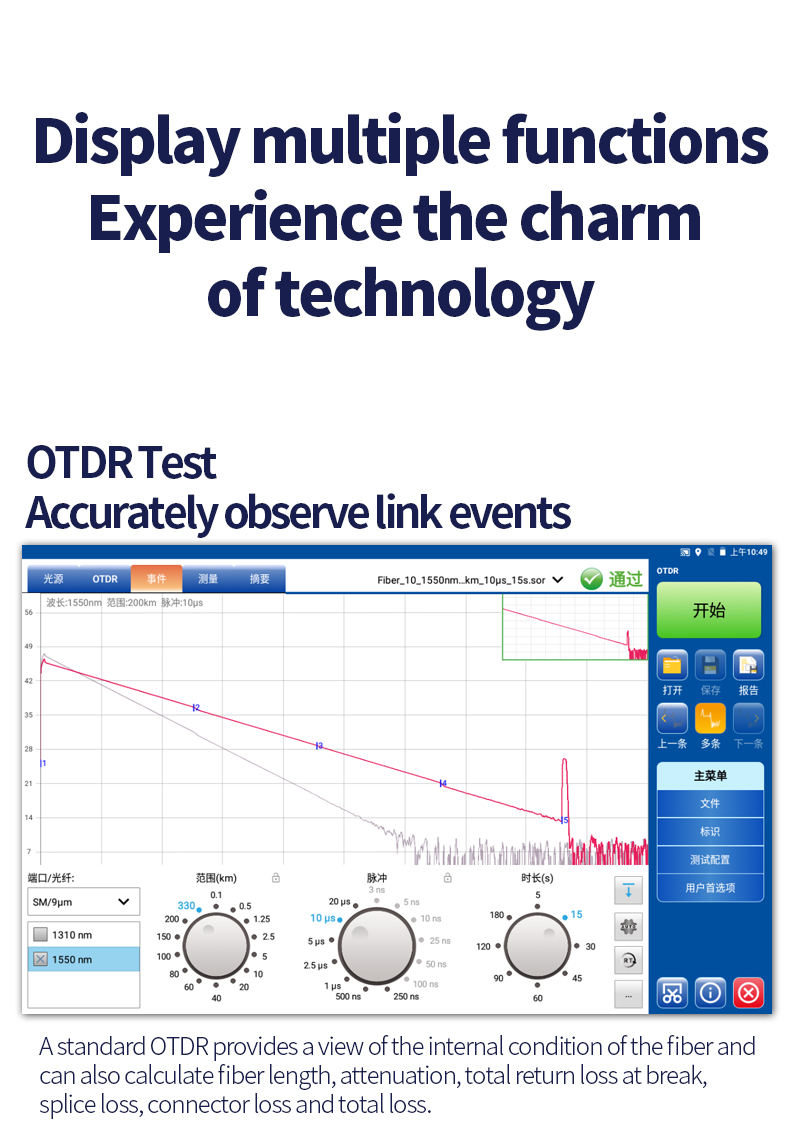How Dynamic Range Dictates OTDR Testing Distance: TFN RM7 Performance Analysis
The Critical Role of Dynamic Range in OTDR Operations
Defining the Performance Benchmark
Dynamic Range (DR)—measured in dB—represents an OTDR's capacity to distinguish between backscattered signals and system noise. Higher DR directly enables:
- Extended testing distances
- Superior event detection accuracy
As verified in TFN's RM7 OTDR datasheet, its industry-leading 50/48 dB dynamic range (varying by wavelength) forms the foundation for 250 km maximum test distance.
Dead Zones vs. Dynamic Range Synergy
While DR governs maximum reach, dead zones determine event resolution. The RM7 achieves unprecedented balance with:
- Event dead zone: 0.6m
- Attenuation dead zone: 2.5m
This synergy ensures long-range capability without sacrificing precision—critical for submarine cables or remote backbone networks.

Mathematical Correlation: Dynamic Range to Distance
The dB-to-Kilometer Conversion
Field tests confirm: 1dB DR increase ≈ 4–5 km added range (single-mode fiber @ 0.2 dB/km). The RM7’s 50dB DR mathematically supports:
Maximum Distance (km) = Dynamic Range (dB) / Fiber Attenuation (dB/km)
= 50 dB / 0.2 dB/km = 250 km
Overcoming 250 km Testing Challenges
Ultra-long-distance testing faces:
- Signal-to-noise degradation
- Cumulative attenuation errors
TFN’s solution combines:
- Photon-counting technology (per datasheet)
- 0.001 dB loss resolution
- Distance uncertainty: 1m + (0.006% × distance)
TFN RM7 OTDR: 250 km Testing Demonstrated
Engineering Innovations
Key specs enabling 250 km performance (Source: TFN-RM7 Datasheet):
Parameter |
Value |
Dynamic Range |
50 dB @ 1310nm / 48 dB @ 1550nm |
Sampling Points |
131,072 |
Pulse Width |
3ns – 20μs (adjustable) |
Battery Life |
>15 hours |
Event Location Error |
±(1m + 0.006% × distance) |
Field Validation Case
During the optical cable wiring of a highway in 2024:
- Detected 0.05 dB splice loss at 237 km
- Pinpointed macro-bend events within ±8m accuracy
- Completed full analysis in <5 minutes using automated multi-pulse sequencing
Optimizing Long-Distance OTDR Tests
TFN RM7-Specific Best Practices
1. Pulse Width Configuration
Use 10–20μs pulses for >150 km tests
2. Wavelength Strategy
1550 nm for minimal attenuation (0.18 dB/km)
3. Data Validation
- Leverage built-in optical link analysis to auto-identify:
- Macro-bends
- Reflection events
- Splitter losses
Advanced Capabilities
- Multi-task operation: Simultaneously run OTDR, OPM, and end-face microscopy
- Network diagnostic tools: Integrated Ping/Traceroute for hybrid fiber-network troubleshooting
- Curve comparison: Overlay results with customizable colors for anomaly detection
Conclusion: Redefining Distance Limits
The TFN RM7 OTDR establishes new benchmarks in long-haul testing through its 50 dB dynamic range and system-level innovations. By mastering DR-distance dynamics and leveraging the RM7’s <1m location uncertainty and 0.001 dB resolution, technicians achieve reliable 250 km fiber test—previously impossible with sub-45 dB OTDR units.
